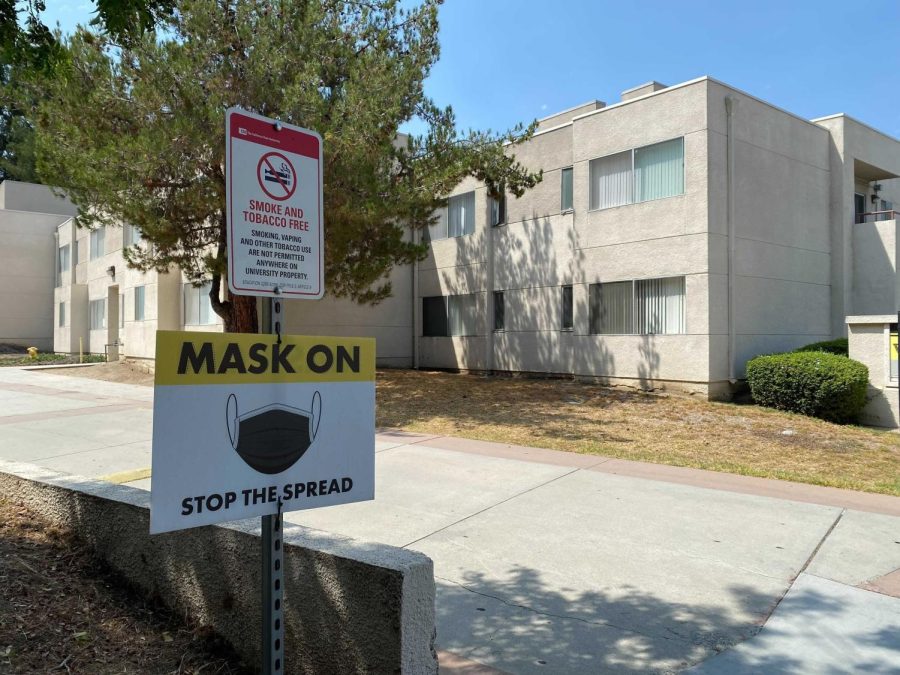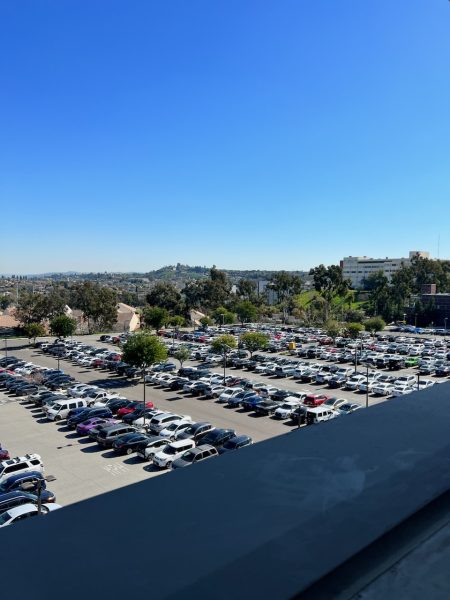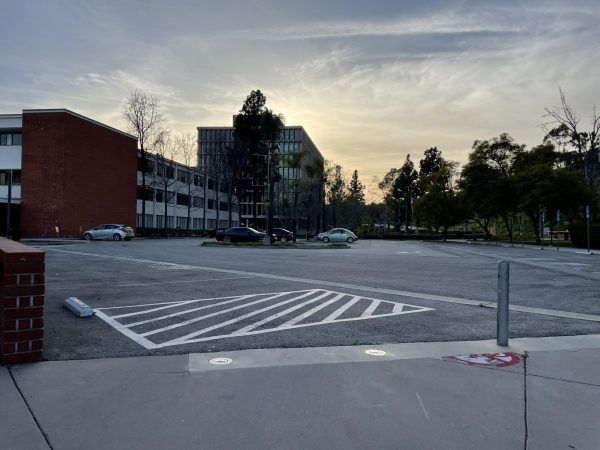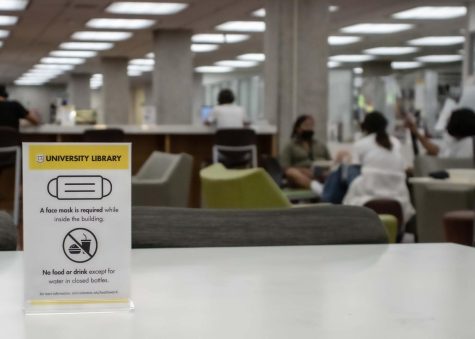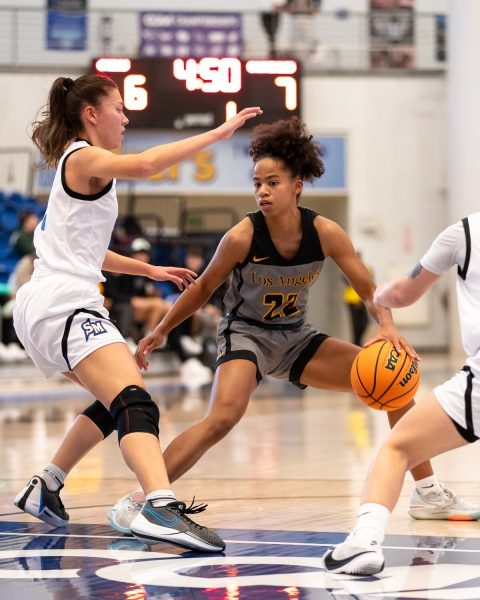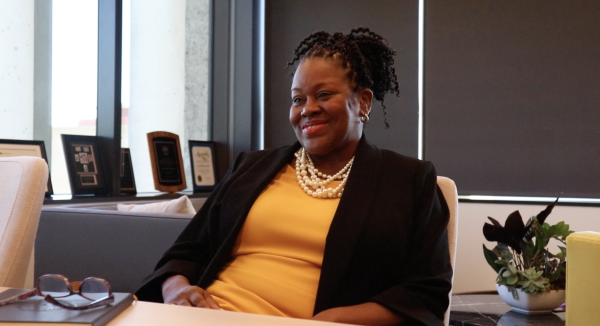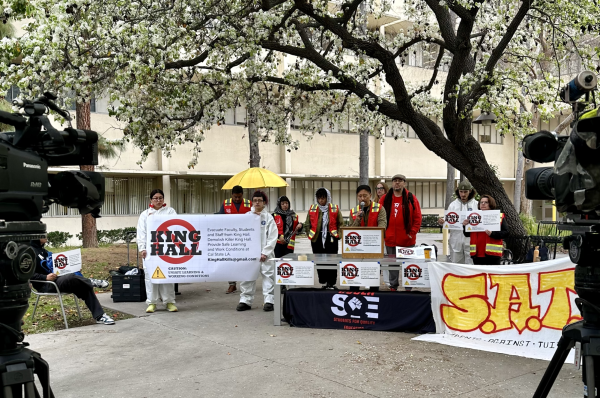Students living in Cal State LA dorms share concerns on COVID safety
Cal State LA students who dorm share the COVID protocols in motion and their take on them.
As COVID-19 cases continue to rise, Cal State LA students living in the dorms have mixed feelings on how safe it really is to live there.
Jasmine Mendoza, a criminal justice major, said that she experienced a few changes due to rules implemented by the university, such as not being “allowed to have family visit or even go into the apartment complex to use the bathroom.”
No one except students who currently live on campus is permitted to drop by the dorms.
Mendoza lives in Phase I but is planning to move out at the end of February.
She expressed complaints that “the resident assistants (RA) and housing facility can’t do much when there is an issue with housing or roommates.”
Despite having students make roommate agreements, such as avoiding large social gatherings or not bringing new people over, none of Mendoza’s roommates abide by the terms.
“So [my] roommates tend to bring people over, and you have no clue where they have been or who they were exposed to,” she said.
The safety procedures implemented in the dorms so far include vaccine requirements, mask mandates, social distancing and regular sanitization. However, Mendoza is concerned that these measures will not be useful due to many students’ unwillingness to comply.
“For one, students don’t listen whatsoever,” she said. “Also, they are still having people live in one room, and none of us are required to get tested so we’re just exposing each other.”
Sophie Peineke, a television, film and media studies major, has a different perspective on living in the dorms.
She said that she feels relatively safe due to being fully vaccinated and having on-campus testing nearby, so she doesn’t plan on moving out any time soon.
She and her roommate are “cautious when it comes to COVID,” and they both refrain from going to crowded events.
“The place where I see the most people is the dining hall, but I feel like the staff does a really good job of checking for vaccine cards, keeping staff masked and vaccinated, and implementing a system that indicates whether tables are sanitized or need to be sanitized after a party has left the area,” said Peineke.
However, she does acknowledge the possibility that “if COVID reached a point where it was highly contagious and deadly even for those who are vaccinated, [she] would opt to go home until it was over, or at least do classes remotely.”
Peineke lives about an hour away from campus and would need to take public transportation, which is costly, time-consuming, and poses a higher risk of contracting COVID.
“Honestly, living in the dorms has allowed me to focus more and has improved my mental health, too, so while I don’t necessarily prefer Zoom or asynchronous classes, I’d rather take online classes from the dorms than from home,” she said.
She is playing everything by ear as the year goes on, but she is currently comfortable with staying in the dorms.
According to Betty Kennedy, the executive director of Housing and Residence Life, they are following recommendations from the Los Angeles Department of Public Health in consultation with the California State University Chancellor’s Office, campus officials and the Student Health Center throughout the COVID-19 pandemic.
She added that residents are required to be vaccinated or receive an approved exemption along with the new booster requirement. Those who have an exemption are required to test weekly. Kennedy said that the majority of the residents are vaccinated.
“Some policies are easier to enforce, such as showing proof of vaccination or negative test prior to entering the dining hall. Some policies rely heavily on student compliance, such as the restriction on visitors and mask-wearing. In South Village, we monitor access to our buildings for the no-guest policy,” she said. ” When we do discover residents who break these policies, we follow up and remind them of the consequences that may include forfeiture of their license agreement.”
These policies and procedures are communicated to residents through email, website, programming, newsletters and signage.
The University Times will continue to provide updates on the safety procedures on campus and in the dorms as the semester continues.
This story is updated with a comment from Cal State LA.

Jessica is a second year, studying mathematics and creative writing. She is returning as an intern reporter for the University Times and is a staff writer...

Cornell Chuaseco is a transfer student from Cypress College in Orange County and is now in his fourth semester with The University Times and Cal State...

